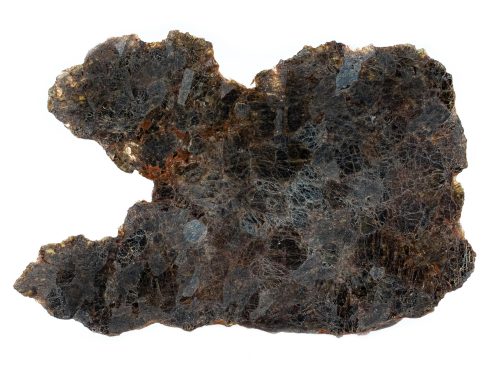Northwest Africa 7831 | Diogenite
HED Achondrite, Diogenite
Found in Western Sahara, 2013
Vesta is the largest and brightest asteroid in the asteroid belt and the second largest body overall (after the dwarf planet Ceres), with an average diameter of about 525 km (326 miles). That is pretty close to the size of the State of Colorado. Vesta was discovered by the German astronomer Heinrich Wilhelm Olbers in 1807.
A couple of billion years ago two massive impacts ejected part of Vesta’s mass and some of that material landed here on Earth as HED (howardite, eucrite, and diogenite) meteorites. It’s astonishing to consider that when you look at photographs of Vesta, or even through a powerful telescope, the actual craters from which the HED meteorites were blasted out can easily be seen, such as Rheasilvia which is over 300 miles wide. So, you could hold one of these HED meteorites in your hand, look at a photo of Vesta, and say to yourself: This came from right there!
The other Vesta meteorite types — howardites and eucrites — journeyed to Earth from that giant asteroid’s surface, but diogenites are different. They originated deep underground and were delivered here on because of the catastrophic meteorite impacts that occurred on Vesta in the distant past. Diogenites are cooled crystalline magma (or lava), excavated from deep inside Vesta by a meteorite impact so tremendous, it blasted right through the crust to the interior of our largest asteroid. The excavated material was expelled into space and some of it eventually landed on Earth as diogenite meteorites.
Showing the single result
